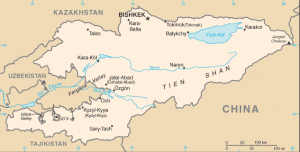In a follow-up to report 10 days ago, the World Health Organization (WHO) reports that between 1 January 2014 and 1 March 2015, WHO received notification of over 23,000 cases of measles in the WHO European Region. The most affected country is Kyrgyzstan with over 7,000 cases reported in just the first seven weeks of 2015. Significant numbers of measles cases have also been reported in Bosnia and Herzegovina, Croatia, Georgia, Germany, Italy, Kazakhstan, Russian Federation and Serbia.

Measles virus D8 has been the most commonly identified circulating genotype.
Based on the current situation and available information, WHO encourages Member States to scale up vaccination against measles across age groups at risk. This will help putting an end to the several outbreaks currently hitting countries of the European Region and preventing similar outbreaks in the future.
At the same time, all countries need to maintain a very high routine measles vaccination coverage so that similar outbreaks will not happen again in the Region, and measles can be eliminated once and for all.
- Measles is one of the leading causes of death among young children even though a safe and cost-effective vaccine is available.
- In 2013, there were 145 700 measles deaths globally – about 400 deaths every day or 16 deaths every hour.
- Measles vaccination resulted in a 75% drop in measles deaths between 2000 and 2013 worldwide.
- In 2013, about 84% of the world’s children received one dose of measles vaccine by their first birthday through routine health services – up from 73% in 2000.
- During 2000-2013, measles vaccination prevented an estimated 15.6 million deaths making measles vaccine one of the best buys in public health.


2 thoughts on “Kyrgyzstan reports more than 7,000 measles cases in 2015”